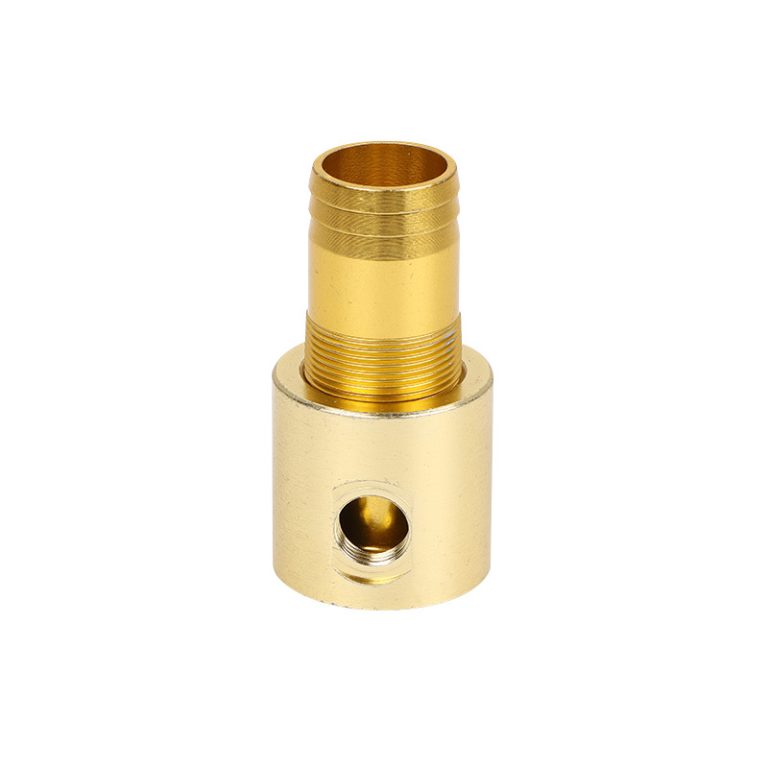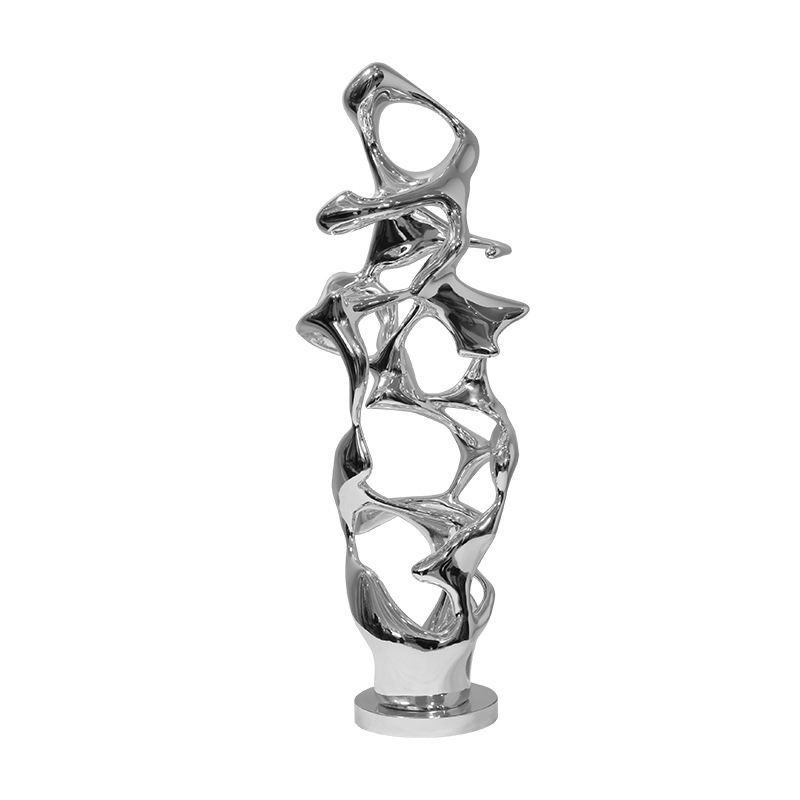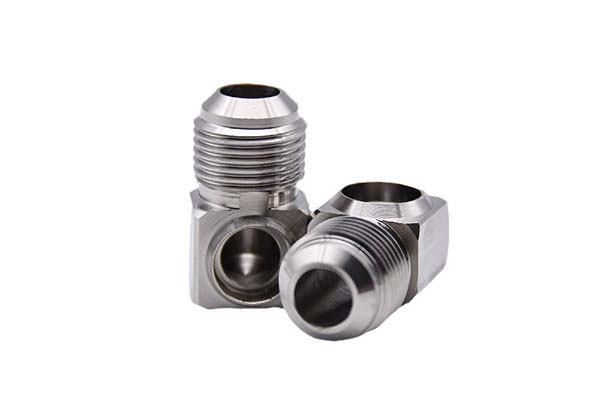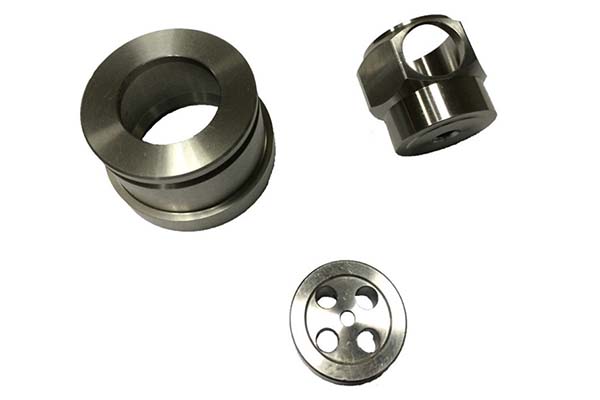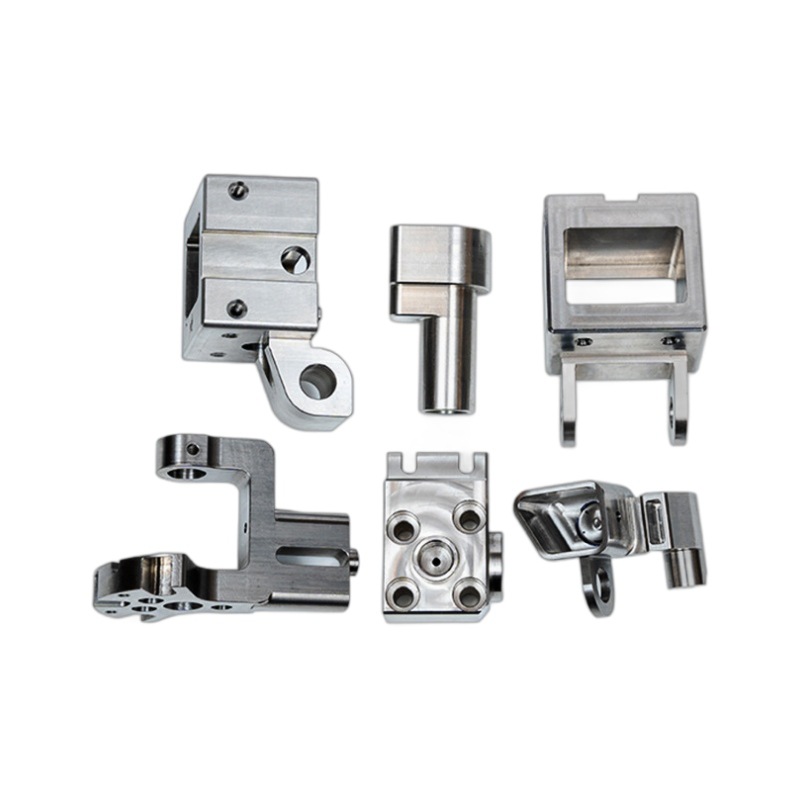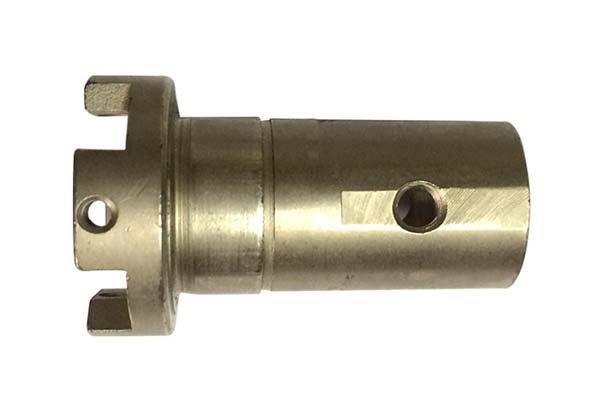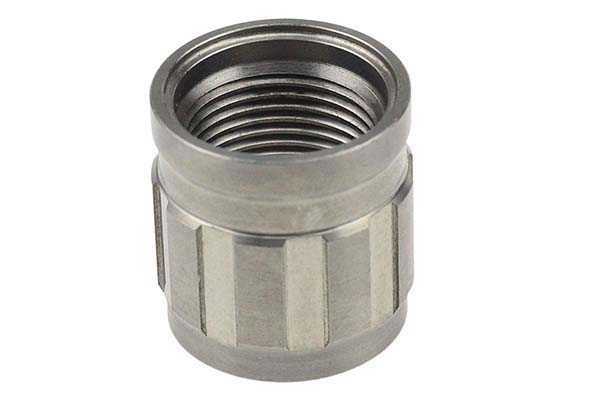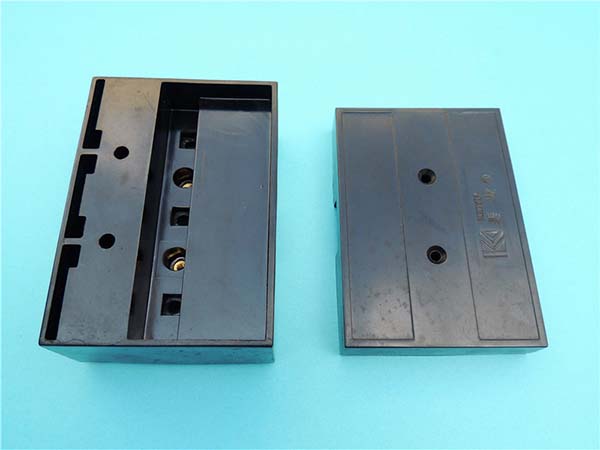I. Understanding Medical Machining Milling
1.1 Definition and Basics
Medical machining milling is a specialized form of precision machining that plays a crucial role in the medical device manufacturing industry. At its core, milling is a metal - cutting process. According to "Machining and Machine Tools Handbook", milling involves using a rotating multi - cutting - edge tool, known as a milling cutter, to remove material from a workpiece. This process can create complex shapes, slots, and features with high precision.
In the context of medical applications, the workpiece materials often include biocompatible metals like titanium, stainless steel, and some specialized alloys. These materials are chosen for their corrosion resistance, strength, and compatibility with the human body. For Yigu Technology example, titanium is widely used in orthopedic implants due to its excellent strength - to - weight ratio and biocompatibility. The milling process in medical machining is designed to shape these materials into components such as surgical instruments, implantable devices, and prosthetics.
The basic principle of milling is based on the relative motion between the milling cutter and the workpiece. The cutter rotates at high speeds, typically ranging from a few hundred to tens of thousands of revolutions per minute, depending on the material and the machining requirements. As the cutter rotates, its teeth engage with the workpiece, removing small chips of material with each pass. This continuous removal of material gradually transforms the raw workpiece into the desired shape. The precision of the milling process allows for tight tolerances, often in the range of micrometers, which is essential for medical components where even the slightest deviation can have significant consequences for patient safety and device functionality.
1.2 Key Components and Tools
Milling Cutters: Milling cutters are the most critical tool in the milling process. They come in a wide variety of shapes and sizes, each designed for specific machining operations. For example, end mills are commonly used for cutting slots, pockets, and contouring in medical components. A ball - nose end mill, with its rounded cutting edge, is ideal for creating curved surfaces, which are often found in implantable devices to ensure better tissue integration. According to a study by the Society of Manufacturing Engineers, the choice of milling cutter material can also impact the machining process. High - speed steel (HSS) cutters are cost - effective and suitable for general - purpose milling of softer materials, while carbide cutters, made from tungsten carbide or other carbide - based composites, offer superior hardness and wear resistance. Carbide cutters are often preferred when machining tough medical - grade metals like titanium, as they can maintain their cutting edge for longer periods, resulting in more consistent machining quality and reduced tool replacement frequency.
Milling Machines: Milling machines are the platforms on which the milling operations take place. In medical machining, computer - numerical - control (CNC) milling machines are widely used. These machines are programmed to precisely control the movement of the workpiece and the milling cutter. CNC milling machines offer several advantages over traditional manual milling machines. They can achieve much higher levels of precision, with positioning accuracies often within ±0.001 mm. For instance, when manufacturing a small - diameter shaft for a surgical drill, the CNC milling machine can precisely control the diameter and surface finish to ensure smooth operation and compatibility with other components. Additionally, CNC milling machines can repeat the same machining operations with high consistency, which is crucial for mass - producing medical components with uniform quality. They also allow for complex machining operations that would be extremely difficult or impossible to perform manually, such as creating intricate internal geometries in a prosthetic joint. There are different types of CNC milling machines, including vertical milling machines, which are suitable for most general - purpose milling operations, and horizontal milling machines, which can be more efficient for certain types of workpiece orientations and machining tasks, especially when dealing with large - scale medical components.
II. Precision in Medical Machining Milling
2.1 Precision Requirements in Medical Applications
In medical applications, the precision requirements for machined components are extremely high. For implantable devices, such as hip implants, the dimensional accuracy must be within ±0.05 mm. A study by the Journal of Biomedical Materials Research found that even a 0.1 - mm deviation in the diameter of a hip implant stem can lead to uneven stress distribution in the surrounding bone tissue. This can cause premature implant failure, as well as pain and discomfort for the patient. Over a 5 - year follow - up period, patients with implants with a deviation of more than 0.05 mm had a 30% higher risk of requiring revision surgery compared to those with implants within the precision tolerance.
For surgical instruments, precision is also crucial. For Yigu Technology example, the cutting edges of a scalpel need to be sharp and precise. The thickness of the blade at the cutting edge should be controlled within 0.01 - 0.03 mm. A scalpel with an inconsistent blade thickness can cause uneven incisions during surgery, increasing the risk of tissue damage, infection, and longer healing times. In microsurgery, where the operations are performed on very small anatomical structures, the precision requirements are even more stringent. The tips of microsurgical forceps should have a tip - to - tip closure accuracy of less than 0.02 mm to ensure precise grasping of tiny blood vessels or nerves without causing damage.
The surface finish of medical components is another aspect of precision. For implantable devices, the surface roughness (Ra) should typically be less than 0.8 μm. A smooth surface reduces the risk of platelet adhesion and subsequent blood clot formation. A research article in the Biomaterials journal showed that implants with a surface roughness above 0.8 μm had a 50% higher rate of thrombus formation in the first 24 hours after implantation compared to those with a smoother surface.
2.2 How Precision is Achieved
Advanced Equipment: High - end CNC milling machines are the cornerstone of achieving precision in medical machining milling. These machines are equipped with high - precision linear guides and ball screws. For instance, some state - of - the - art CNC milling machines use linear guides with a straightness accuracy of ±0.001 mm over a length of 1000 mm. The ball screws are designed to have extremely low backlash, often less than 0.002 mm. This ensures that the movement of the milling cutter is smooth and accurate, enabling the creation of complex shapes with tight tolerances. Additionally, high - resolution encoders are used to monitor the position of the axes. Encoders with a resolution of 1 nanometer can provide real - time feedback on the position of the workpiece and the milling cutter, allowing for precise adjustments during the machining process.
Optimized Machining Processes: The machining process itself needs to be carefully optimized. This includes choosing the right cutting parameters. For Yigu Technology example, when milling titanium for medical implants, a lower cutting speed of around 50 - 80 m/min is often used compared to other metals. This is because titanium has a low thermal conductivity, and high cutting speeds can cause excessive heat build - up, which can affect the material properties and the precision of the machined part. The feed rate and depth of cut also need to be precisely controlled. A fine - tuned feed rate of 0.05 - 0.1 mm/tooth can help achieve a better surface finish and dimensional accuracy. In addition, multi - axis milling is often employed in medical machining. Five - axis milling machines, for example, allow for the machining of complex 3D shapes in a single setup. This reduces the need for multiple setups and re - positioning, which can introduce errors. With five - axis milling, components with intricate geometries, such as the internal structures of a knee implant, can be machined with high precision.
Skilled Operators and Quality Control: Skilled operators play a vital role in achieving precision. They need to have a deep understanding of the milling process, the equipment, and the materials being used. Operators are trained to perform accurate tool - setting procedures. For Yigu Technology example, they use precision tool - setting gauges to ensure that the milling cutter is precisely positioned relative to the workpiece. A misaligned cutter by even 0.01 mm can lead to dimensional errors in the final product. Quality control is also an integral part of the precision - achieving process. Regular inspections are carried out using coordinate measuring machines (CMMs). CMMs can measure the dimensions of a machined part with an accuracy of ±0.001 mm. They are used to verify that the components meet the strict tolerance requirements. Statistical process control (SPC) techniques are also employed. SPC involves collecting and analyzing data from the machining process to detect any trends or variations that could potentially lead to out - of - tolerance parts. By monitoring key process variables, such as spindle speed, feed rate, and temperature, operators can make timely adjustments to ensure consistent precision throughout the production run.
IV. Comparison and Data Analysis
4.1 Comparison with Traditional Machining Methods
When comparing medical machining milling with traditional machining methods, several key differences emerge, especially in terms of precision, efficiency, and cost. The following table outlines these differences:
| Comparison Aspect | Medical Machining Milling | Traditional Machining Methods |
| Precision | Can achieve tolerances in the micrometer range, often ±0.001 - 0.01 mm for critical medical components. For example, in the production of dental implants, the precision of milling ensures a perfect fit in the jawbone. | Generally, the precision is in the range of ±0.1 - 1 mm. Traditional machining may not be suitable for components with extremely tight tolerances required in medical applications. |
| Efficiency | CNC - controlled milling allows for automated and continuous production. Complex parts can be machined in a single setup, reducing the overall production time. For instance, a batch of 100 surgical instrument components can be produced in 20 hours using milling. | Traditional methods often require multiple setups and manual interventions. The production of the same 100 surgical instrument components might take 50 hours, as each setup and operation needs to be carefully adjusted by hand. |
| Cost | Initial investment in high - end CNC milling machines and advanced tooling can be high. However, in the long run, the reduced scrap rate and higher production efficiency can lead to cost - savings. For a large - scale production of 10,000 implantable devices, the cost per unit is $50 due to efficient milling processes. | The initial investment in traditional machining equipment may be lower, but the higher labor costs, longer production times, and higher scrap rate can increase the overall cost. For the same production of 10,000 implantable devices, the cost per unit could be $80. |
| Complexity of Shapes | Can create highly complex 3D shapes with ease. Five - axis milling, for example, enables the machining of intricate internal and external geometries, such as the complex structure of a prosthetic heart valve. | Limited in creating complex shapes. Multiple operations and tool changes are often required, and some complex geometries may be difficult or impossible to achieve without additional processes. |
4.2 Data - backed Success Stories
Case 1: Hip Implant Production
A leading medical device manufacturer switched from traditional machining to medical machining milling for the production of hip implants. Before the switch, the rejection rate due to dimensional inaccuracies was 15%. After adopting milling, the rejection rate dropped to 3%. This reduction in the rejection rate not only saved production costs but also improved the quality of the implants. The improved precision of the milling process ensured that the implants fit better in the patients' hips, reducing the need for revision surgeries. Over a period of one year, the number of revision surgeries for hip implants decreased by 40% in the hospitals using the new implants.
Case 2: Microsurgical Instrument Manufacturing
A company specialized in manufacturing microsurgical instruments started using milling technology. The precision requirements for the tips of their microsurgical forceps were extremely high, with a tip - to - tip closure accuracy of less than 0.02 mm. Using traditional machining methods, only 60% of the forceps met this requirement. After implementing milling, 95% of the forceps were within the precision tolerance. This led to a significant improvement in the performance of the microsurgical procedures. Surgeons reported a 30% increase in the success rate of microsurgeries, especially in procedures involving the repair of small blood vessels and nerves, thanks to the more precise forceps.
VII. FAQ
7.1 What are the most common materials used in medical machining milling?
The most common materials in medical machining milling include stainless steel, especially 316L and 317L grades. These stainless steels offer excellent corrosion resistance in the body's physiological environment, good strength, and are relatively easy to machine. For Yigu Technology example, 316L is widely used in surgical instruments and implantable devices due to its biocompatibility. Titanium and its alloys, such as Ti - 6Al - 4V, are also popular. Titanium has a high strength - to - weight ratio, low modulus of elasticity similar to bone, and outstanding biocompatibility, making it ideal for orthopedic implants. Additionally, some specialty polymers like PEEK (Polyether - ether - ketone) are used. PEEK has good chemical resistance, mechanical properties, and can be sterilized, which is suitable for applications where a lightweight and non - metallic option is required, such as in some spinal implants.
7.2 How does precision in milling affect the cost of medical devices?
Higher precision in milling generally increases the initial cost of medical devices. Precision milling requires advanced and expensive CNC milling machines with high - end components like high - accuracy linear guides and encoders. For instance, a top - of - the - line CNC milling machine used in medical machining can cost hundreds of thousands of dollars. The tooling for precision milling, such as carbide - tipped end mills with tight tolerances, is also more costly. Skilled operators are needed to program and operate these machines to achieve the required precision, and their expertise commands higher wages. However, in the long run, precision milling can lead to cost - savings. It reduces the rejection rate of parts. A study showed that improving precision from ±0.1 mm to ±0.01 mm in the production of implantable devices can decrease the rejection rate from 10% to 2%. This means fewer resources are wasted on defective products, ultimately reducing the overall cost per unit.
7.3 Are there any specific regulations for medical machining milling?
Yes, there are strict regulations for medical machining milling. In the United States, the Food and Drug Administration (FDA) has regulations that govern the manufacturing of medical devices. These regulations cover aspects such as the quality of materials used, the manufacturing process control, and the final product's safety and effectiveness. For example, all materials used in medical devices must be biocompatible and meet specific standards. The ISO 13485 standard is an international standard for the quality management system in the medical device industry. It requires manufacturers to have a documented quality management system in place, covering everything from design control to product realization, including the milling process. Compliance with these regulations is crucial as non - compliance can lead to product recalls, legal issues, and harm to patients.
